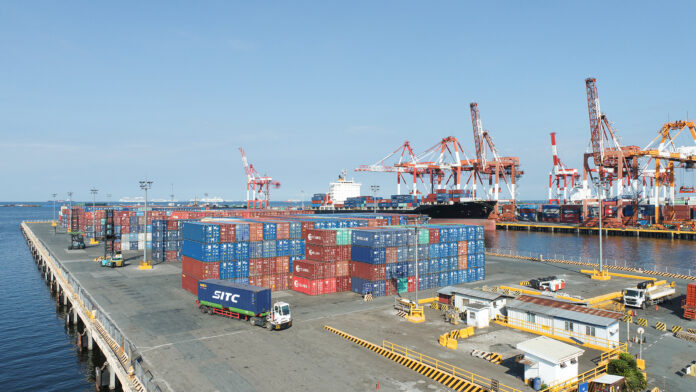-
The Philippine Ports Authority urged importers and exporters to prepare for shipment delays following partial closure of some ports in China
-
For the past two weeks, several transshipment ports in China slowed down operations due to a spike in COVID-19 cases, PPA noted
-
Manila International Container Terminal and Manila South Harbor, which handle 85% of the country’s foreign trade volume, are operating under normal conditions
-
As of Aug 17, MICT had an average utilization rate of 68% and Manila South Harbor 56%
The Philippine Ports Authority (PPA) is urging importers and exporters to prepare for looming shipment delays due to partial closure of some ports in China amid a spike in COVID-19 cases.
“We need to prepare. Eventually, the delays in cargo shipments will catch up with us due to the congestion being experienced in transshipment ports,” PPA general manager Jay Daniel Santiago said.
“We are encouraging all importers and exporters to take the necessary steps to adjust and secure their operations to mitigate the impact of the slowdowns or partial closures of the big ports in their overall operations,” Santiago said.
For now the Philippines’ major port gateways–Manila International Container Terminal (MICT) and Manila South Harbor–are operating under normal conditions, below the 75% threshold utilization level, according to PPA.
As of August 17, MICT and Manila South Harbor had average utilization rates of 68% and 56%, and berth utilization rates of 59% and 56%, respectively. Both ports have an average crane productivity rate of 25 moves an hour.
MICT and South Harbor handle 85% of the country’s foreign trade volume. They process an average of 12,000 twenty-foot equivalent units of foreign cargoes daily.
Santiago assured shippers “Philippine ports can handle the bulk of the delayed shipments when conditions at the transshipment ports start to normalize.”
For the past two weeks, PPA noted several transshipment ports in China have slowed down operations due a spike in COVID-19 cases.
Philippine Exporters Confederation Inc. assistant vice president for advocacy, communications and special concerns Flordeliza Leong in a news report said she feared terminal closures may lead to further supply chain disruptions and can worsen the plight of exporters. Exporters have complained of lack of vessel space and high freight rates.
The latest to shut down was Ningbo-Zhoushan Port’s Meishan terminal, which has been closed for the seventh straight day on August 17 after a dockworker tested positive for the highly contagious COVID-19 Delta variant.
Meishan terminal handles around 25% of the containers at Ningbo-Zhoushan port, the world’s third busiest container port. The terminal’s closure is also worsening congestion at other major Chinese ports where ships are being diverted from Ningbo port.
Association of International Shipping Lines president Patrick Ronas confirmed to PortCalls in a text message on August 18 that there are cargo bound for the Philippines awaiting ships for carriage to the country, noting that there “will definitely be delays.”
“Now once Ningbo starts to open, then expect a surge in containers coming into the country,” he added.
As of August 18, there were reports that Meishan terminal will partially open within days, and full resumption of operations is expected in September although no final announcement has been made.
Other major ports in the region likewise reported congestion owing to the lingering effect of the pandemic, which since last year has triggered various shipping issues such as port congestion, container shortage, vessel capacity gap, and higher freight rates.
Hong Kong, a transshipment port, is reportedly seeing another increase in congestion after utilization had dropped with the reopening of Yantian port in Shenzhen. Yantian port partially closed down for three weeks starting late May following a COVID-19 outbreak.
PPA noted that majority of Philippine imports and exports pass through these transshipment ports as the country remains as a feeder economy due to its low volumes.
(Updated on August 20, 3:35pm, to include quote from the Association of International Shipping Lines president Patrick Ronas.)





